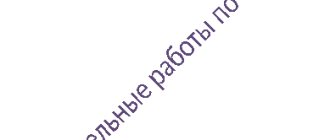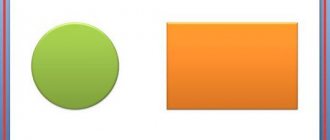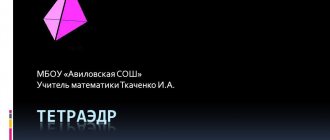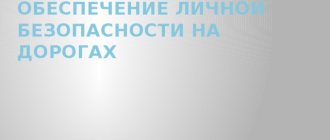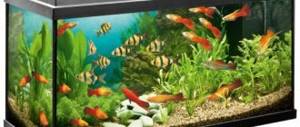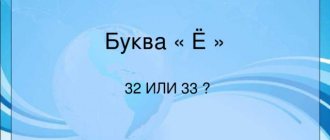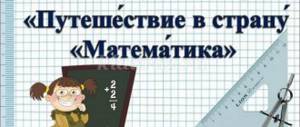Bodies of rotation: task 14 of the profile Unified State Examination
Cylinders, spheres and cones: we will inscribe them into other objects, we will dissect them with various planes, we will find the angles of inclination of these sections to the base or their area.
Problem 1. A sphere is inscribed in a regular hexagonal pyramid, the side edge of which is 10 and the height is 6. (The sphere touches all the faces of the pyramid.) Find the area of this sphere.
The sphere is inscribed in the pyramid
Since the sphere touches all the faces, the points of contact necessarily lie on the apothems of the faces. Let's draw a cross-section of the pyramid, with the cut going along the apothems of the opposite faces. Then the section is the triangle MSN, and the section of the sphere is the circle inscribed in this triangle. Let's figure out what lengths of segments are present in this section. Since the height of the pyramid is 6, and the side edge is 10, we find the length of the segment:
Since the base of the pyramid is made up of regular triangles, the length is equal to the edge of the base. Now we can determine the length of the apothem:
The base of a cross-sectional triangle is made up of two identical segments that are equal to the height of the triangle, for example. Since this is a regular triangle with side 8, then the height of this triangle is , and the length is MN then .
Pyramid cross section
So, now we know the sides of the section triangle: , . Let us determine the radius of the circle inscribed in it.
A circle inscribed in a section of a pyramid (section of a sphere)
As is known, the radius of an inscribed circle can be determined through the area:
Now, knowing the radius, we can find the surface area of the sphere:
Answer:
Problem 2. The radius of the base of the cone is 6, and its height is 8. The section plane contains the vertex of the cone and the chord of the base, the length of which is 4. Find the distance from the center of the base of the cone to the section plane.
Cone section
The generatrix of the cone can be found from the axial section using the Pythagorean theorem.
Segment OP – height of the triangle. In triangle MON the sides are 4, 6 and 6, we determine its area using Heron's formula and then find the height:
The semi-perimeter of triangle MON is 8, area:
The required distance is the height of the triangle drawn to SP. Let us determine the height of the section SP.
Additional constructions for the problem
According to the Pythagorean theorem
Area of triangle SOP:
Finally, the required distance:
Answer:
Problem 3. A sphere is inscribed in a regular quadrangular pyramid, the side edge of which is 10 and the height is 6. (The sphere touches all the faces of the pyramid.) Find the area of this sphere.
A pyramid into which a sphere must be inscribed
Since the sphere touches all the faces, the points of contact necessarily lie on the apothems of the faces. Let's draw a cross-section of the pyramid, with the cut going along the apothems of the opposite faces. Then the section is the triangle SQP, and the section of the sphere is the circle inscribed in this triangle. Let's figure out what lengths of segments are present in this section. Since the height of the pyramid is 6, and the side edge is 10, we find the length of the segment:
Then equal to , since the triangle is isosceles and right-angled, has acute angles in , the trigonometric functions of which are well known:
Let us determine the length of the apothem of the face:
In triangle SQP the sides are: , Let us determine the radius of the circle inscribed in it.
As is known, the radius of an inscribed circle can be determined through the area:
Now, knowing the radius, we can find the surface area of the sphere:
Answer:
Problem 4. The radius of the base of a cone with a vertex is 6, and the length of its generatrix is 9. On the circle of the base of the cone, points and are selected, dividing the circle into two arcs, the lengths of which are in the ratio 1:5. Find the cross-sectional area of the cone by the plane.
Circular arcs of the base of the cone and section
The lengths of circular arcs are proportional to the central angles, therefore , . Thus, since the radius of the base of the cone is 6, then the triangle MON is regular and the length of the chord is . Next, we simply use Heron’s formula to determine the cross-sectional area:
Answer:
Problem 5. Two parallel planes, the distance between which is 2, intersect a ball. One of the planes passes through the center of the ball. The ratio of the cross-sectional areas of the ball by these planes is 0.84. Find the radius of the ball.
Sphere and its sections
The cross-sectional area of a ball by a plane is a circle. Area of a circle
The great circle passes through the center of the sphere, so its radius is the radius of the sphere R. Then the ratio of the areas is:
Consider a triangle. In him , , . It's a right triangle, so
Or
Then:
We got the equation:
Answer:
Theoretical material and practical assignments on the topic “Bodies of Rotation”, grades 10-11
Topic: Cylinder and cone. Frustum. Base, height, lateral surface, generatrix, development. Axial sections and sections parallel to the base.
Task 1: Write a summary, make drawings
Task 2: Solve problems
- The generatrix of the cone is 10, the height of the cone is 6. Find the radius of the cone.
- The axial section of a cone is an equilateral triangle with a side of 10 cm. Find the radius of the base and the height of the cone.
Practical work No. 27
Topic: Solving problems on the topic “Cylinder and Cone”
1. The radius of the base of the cylinder is 2 cm, height is 3 cm. Find the diagonal of the axial
sections.
2 The radius of the base of the cylinder is 5 cm, and its generatrix is 9 cm. Find
axial section area.
3. A rectangle whose sides are 6 cm and 4 cm rotates around the smaller side. Find the height and diameter of the base.
4. The radius of the base of the cone is 3 m, the height is 4 m. Find the generatrix l.
5. The radius of the base of the cone is R. The axial section of the cone is a right triangle. Find its area.
Literature Dadayan A.A. Mathematics: textbook - 3rd ed., revised. and additional - M.: INFRA-M, 2020. - 544 p. — (Secondary vocational education). — Access mode: https://znanium.com/catalog/product/1006658, §13.1, p.405
Send completed practical work and assignments on theoretical material to the following address: If you have any questions, ask! Do not be shy!
Topic: Ball and sphere, their sections. Tangent plane to a sphere.
Plan:
1. Ball, its elements. Ball equation.
2.Sphere. Equation of a sphere.
1.Ball
- a body of rotation obtained by rotating a semicircle around its fixed diameter.
Examples of bodies shaped like a ball or sphere: the dome of a building may have the shape of a part of a sphere cut off by a plane; the earth has a shape close to a ball; billiard ball. Give your own examples.
Ball elements:
Any segment connecting the center of a ball with a point on its surface is called a radius
.
The surface of a ball is called a sphere.
A segment connecting two points on a spherical surface and passing through the center of the ball is called a diameter
.
Ends of any diameter are called diametrically opposed points
ball.
The diameter is called the axis of the ball
, and its both ends are
the poles
of the ball.
The plane passing through the center of the ball is called the center plane.
The plane passing through point A of the spherical surface and perpendicular to the radius drawn to point A is called the tangent plane
.
Point A is called the tangent point
.
If the cutting plane passes through the center of the ball, then the section of the ball is called a great circle
.
Other flat sections of the ball are called small circles.
Ball
is the collection of all points in three-dimensional space, the distance from which does not exceed a certain distance R to a point called the center of the ball O.
Ball
- a set of all points of three-dimensional space limited by a sphere.
Ball equation
1. Equation of a ball with radius R and center at the origin of the Cartesian coordinate system:
x2 + y2 + z2 ≤ R2
2. Equation of a ball with radius R and center at a point with coordinates (x0, y0, z0) in the Cartesian coordinate system:
(x - x0)2 + (y - y0)2 + (z - z0)2 ≤ R2
2.Sphere
this is the surface of the ball.
Sphere
is the collection of all points in three-dimensional space that are at the same distance R from one point, called the center of the sphere O.
A sphere can be described as a three-dimensional figure that is formed by rotating a circle around its diameter by 180° or a semicircle around its diameter by 360°.
Sphere equation
1. Equation of a sphere with radius R and center at the origin of the Cartesian coordinate system:
x2 + y2 + z2 = R2
2. Equation of a sphere with radius R and center at a point with coordinates (x0, y0, z0) in the Cartesian coordinate system:
(x - x0)2 + (y - y0)2 + (z - z0)2 = R2
Questions on the topic “Ball and Sphere”
What is a ball? What is the surface of the sphere?
What is the radius of a ball, the diameter of a ball? Which points on the ball are called diametrically opposite?
What is the great circle of a ball?
Literature Dadayan A.A. Mathematics: textbook - 3rd ed., revised. and additional - M.: INFRA-M, 2020. - 544 p. — (Secondary vocational education). — Access mode: https://znanium.com/catalog/product/1006658, §13.5, p. 413.
https://resh.edu.ru/subject/17/11/, lesson No. 8
Practical work No. 28
Topic: Solving problems on the topic “Bodies of Rotation.”
Option 1 Option 2
- Write down the equation of a ball if the coordinates of its center and radius are known:
A(0;0;-1), R=2 A(1;0;-2), R=
- Determine the coordinates of the center and radius of the sphere if
(x+4)2+(y-3)2+ z2=7 x2+(y-2)2+ (z+3)2=5
- The generatrix of the cone is equal to L. Find the height of the cone H if the angle at the base is 30°.
L=
- Find the diagonal of the axial section of the cylinder if the radius is equal to R and the generatrix is equal to L.
L= L
R=2 R=3
- Given the equation of the sphere x2+y2+ z2=9 and three points A(2;-1;1), B(2;2;-1), C(-1;-2;5). Determine which point is inside the sphere, which lies on the sphere, which is outside the sphere.
Literature Dadayan A.A. Mathematics: textbook - 3rd ed., revised. and additional - M.: INFRA-M, 2020. - 544 p. — (Secondary vocational education). — Access mode: https://znanium.com/catalog/product/1006658, §13.5, p. 413.
4
The concept of a geometric body
Before introducing the definition of a geometric body, let us introduce the following several introductory concepts.
Definition 1
A point is called a boundary point for a figure if points close to it are both contained in the figure and not contained in it.
Definition 2
The boundary of a figure is the set of all boundary points for this figure.
Definition 3
A point is called internal to a figure if it belongs to this figure, but is not a boundary point for it.
Definition 4
A figure is called limited if it can fit into any sphere of space.
Definition 5
A figure is called connected if any points belonging to this figure can be connected by any continuous line that does not extend beyond the boundaries of this figure.
Let us now, finally, directly introduce the definition of a geometric body.
Definition 6
A geometric body is a figure in space that is limited, connected and contains all its boundary points.
Finished works on a similar topic
- Course work: Bodies and surfaces of revolution 400 rub.
- Abstract Bodies and surfaces of revolution 240 rub.
- Test work: Bodies and surfaces of revolution 210 rub.
Receive completed work or specialist advice on your educational project Find out the cost
The boundary of a geometric body is called the surface of this geometric body.
Examples of a geometric body are polyhedra and bodies of revolution. [/Definition]
Definition 7
A polyhedron is a geometric body in space that is limited by several polygons.
Examples of polyhedra can be tetrahedron, cube, octahedron, dodecahedron, icosahedron and others (Fig. 1).
Figure 1. Examples of polyhedra
Next, we will consider bodies of rotation in detail.
Bodies of revolution and their sections
A body of revolution is a body formed as a result of the rotation of a line around a straight line.
Examples of bodies of revolution.
A ball is formed by a semicircle rotating around the diameter of the cut.
A cylinder is formed by a rectangle rotating around one of its sides.
A cone is formed by a right triangle rotating around one of its legs.
When a body of revolution intersects a plane, a flat figure is obtained, bounded in most cases by a curved line. In particular cases, the section figure can be a rectangle (for a cylinder) and a triangle (for a cone).
The axial section of a cylinder is a section by a plane passing through the axis of the cylinder. The axial section of the cylinder is a rectangle, two sides of which are the generators of the cylinder, and the other two sides are the diameters of the bases of the cylinder.
A cutting plane perpendicular to the axis of the cylinder intersects it in a circle.
If the plane passes through the height of the cone FO, then the section of the cone by this plane is called axial and it is an isosceles triangle, the base of which is the diameter of the base of the cone, and the sides are the generatrices of the cone.
Cylinder surface section
There are the following cases of cutting the surface of a right circular cylinder by a plane:
1) a circle, if the cutting plane P is perpendicular to the axis of the cylinder, and it is parallel to the base of the cylinder;
2) ellipse, if the cutting plane P is not perpendicular and not parallel to the cylinder axis;
3) a pair of straight lines if the cutting plane Q contains the axis of the cylinder or is parallel to it.
Cone surface section
In the general case, a circular conical surface includes two completely identical cavities that have a common vertex. The generatrices of one cavity are a continuation of the generatrices of the other cavity.
There are various cases of cutting the surface of a circular cone by a plane.
1. Ellipse , if the cutting plane is not parallel to any generatrix (Fig. 107 b). Here the cutting plane intersects the surface of only one cavity of the cone. The angle of inclination of the cutting plane relative to the base of the cone is less than the angle that the generatrix of the cone makes with the base of the cone. Here the angle is the angle that the generatrix makes with the base.
2. Parabola , if the cutting plane is parallel to only one generator (Fig. 107 c).
3. Hyperbola , if the cutting plane is parallel to two generators (Fig. 107 a). In this case, the cutting plane intersects both cavities of the cone. The angle of inclination of the cutting plane relative to the base of the cone is greater than the angle.
4. A pair of straight lines , if the cutting plane passes through the vertex of the cone and the angle of its inclination to the base of the cone is greater than the angle. This case is sometimes considered a special case of hyperbole.
Sphere section
Every section of a ball by a plane is a circle (or a point, if the plane touches the ball). The base of the perpendicular drawn from the center of the ball to the intersecting plane is the center of the circle obtained in the section.
When solving problems, it is more convenient to draw one of the large circles instead of a ball, and replace the section plane with the chord of this circle.
The plane passing through the center of the sphere (ball) is called the diametral plane.
The section of a sphere (ball) by the diametral plane is called a great circle ( great circle ) .
